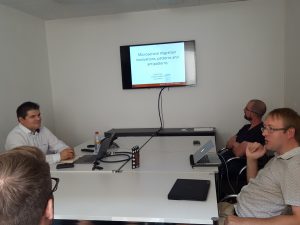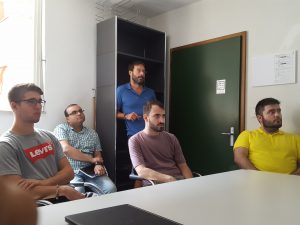At the Service Prototyping Lab, we were honored to receive another international speaker in our colloquium series this year. Davide Taibi assistant professor (tenure-track) of cloud and web engineering presented his ongoing research at Tampere University of Technology. Specifically, His research interests include software quality and cloud migration in continuous architecting processes, supporting companies in migrating to microservice-based architectures while keeping technical debt under control. Before, he was assistant professor at the Free University of Bozen (Italy), post-doc at the University of Kaiserslautern and Fraunhofer IESE, where he replaced prof. Dieter Rombach during his sabbatical year, and Ph.D. at the University of Insubria (Italy) under the supervision of prof. Sandro Morasca.
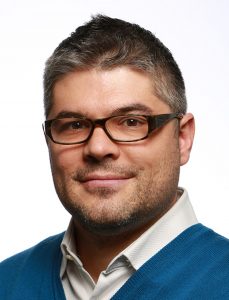
Abstract of the talk:
Microservices is a relatively new architectural pattern. They are increasing their popularity in the industry, being adopted by several big players such as Netflix, Spotify, Amazon, and many others and several companies are now following the trend, migrating their systems to microservices.
However, microservices are not the silver bullet, and several companies are migrating to microservices hoping to achieve different benefits.
In this seminar, he presented his research interests, and the latest publications, introducing the motivations, issues, and benefits of microservices [1], including technical and cost issues [4]. He presented the most common microservices migration processes, microservices architectural patterns [2], microservice bad smells [3] and a process mining approach to slice monolithic systems into microservices [under review].
Moreover, he introduced technical debt and continuous architecture issues during the rearchitecting processes [5] and the initial result of a migration framework to evaluate the effectiveness of the migration to microservices.
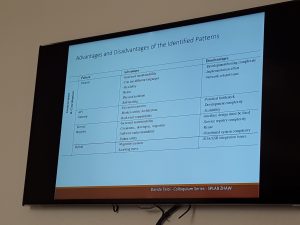
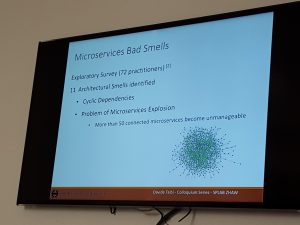
Davide focused his talk on his recent research on cloud migration in continuous architecting processes and explained how to support companies in migrating to microservice-based architectures while keeping technical debt under control [5].
